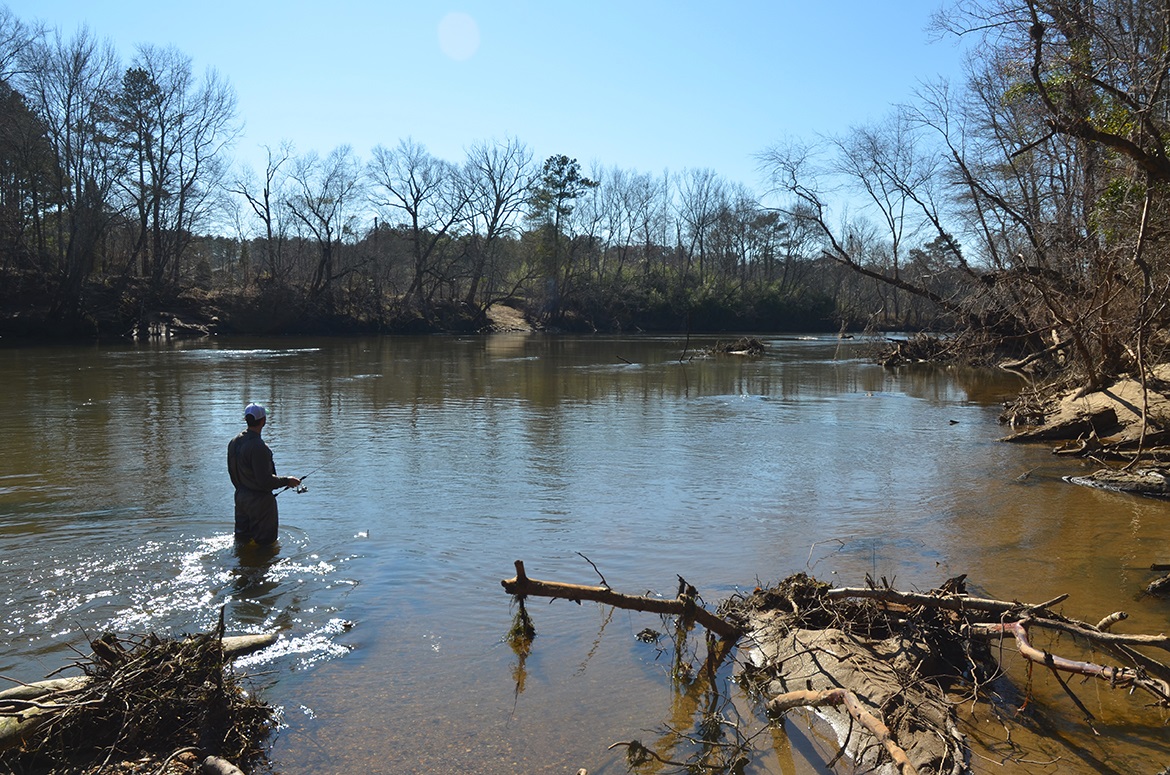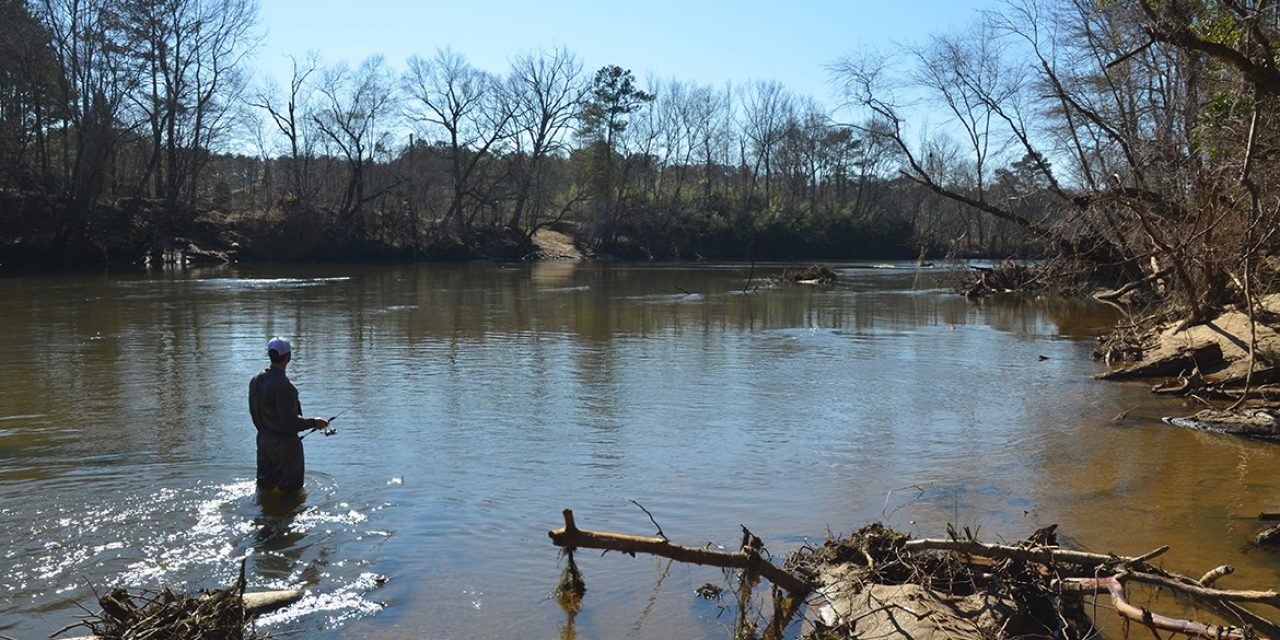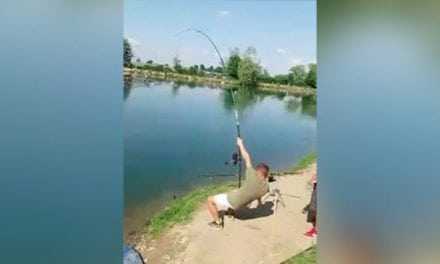
During the dog days of summer, the bass bite can be tough as both the fish and the anglers chasing them become lethargic. However, there is one surefire way to beat the heat and experience some of the best angling of the year: Instead of struggling on your local lake, do some research and identify a nearby smallmouth stream or river because on these flowing waterways, hot temperatures translate into a hot bite.
Current is Key
Perhaps the best aspect of river fishing is how smallmouths set up, or position themselves in predictable places. All fish need both food and dissolved oxygen to survive. A smallmouth bass receives both by relating to current. More specifically, river smallmouths prefer to live on the edge of current. This way they conserve energy and won’t be swept down in the fastest water, yet they’re also prepared to pounce on an easy meal floating downstream.
Eddies created from the water current are the most popular smallmouth locales. The easiest ones to identify have boulders that create a break on the surface, which causes the water to pull back against the normal flow. Lying just below these rocks downstream is a pool of swirling water. Oftentimes this swirling motion creates bubbles or a foam-looking substance that floats on the surface. This is the perfect location for an initial cast. While these eddies often appear small, they can hold a dozen or more smallmouths. Submerged eddies are equally productive, but locating them requires a keen eye. If the swirling water isn’t apparent, polarized sunglasses help make rock structures more identifiable.
Current seams are similar to eddies in that swirling water is often visible. The difference is that current seams stretch along the edge, dividing the fast and slow moving water. Anglers should target that distinct line with repeated casts. This is slightly more difficult as the fish could be holding shallow on the seam in four feet of water, or further downstream on the seam in eight feet of water. Seams can hold bigger schools due to the sheer size of the area, but the fish generally aren’t grouped up as tightly.
Wade, Float, or Boat
Boat ownership is not a requirement of river fishing. In fact, some of the best smallmouth streams are too shallow and hazardous for a modern bass boat. Due to this, many anglers choose to travel on foot. With wading shoes or felt-tip boots, navigating up and down a stream is straightforward. If you choose to wade, take a scouting trip beforehand so that you can maximize fishing time. Find a section of river with three or four sets of rapids, and thus numerous eddies and seams, in a 300-yard stretch. That way, you’ll spend more time fishing than walking between holes.
On bigger rivers, a boat is preferred due its comfort and mobility. But a canoe or kayak is your best bet to stay mobile on the smaller streams. Aluminum canoes, while heavier, can withstand the pounding the rocky rapids inevitably dish out. For safety reasons, anglers often portage or wade and drag their canoes around the most dangerous sets of rapids. Once safely downstream, return to the eddies and seams as more flow equals more oxygen and food.
Gear Up
Effective river angling does not require much in terms of equipment. Not only are river smallmouths predictable, their palates are not picky. Smaller soft-plastic baits work well, especially those imitating crayfish. In addition, the Berkley® Gulp! Alive!® Leech and Nightcrawler are particularly effective. These can be fished on a drop-shot or under a float. Wacky-rigged Berkley® Havoc® Flat Dawgs and shaky head jigs with Berkley® Gulp!® Shaky Worms
and shaky head jigs with Berkley® Gulp!® Shaky Worms are also proven producers.
are also proven producers.
Smallmouths fight strong and river smallmouths are even feistier, so Berkley® Trilene®100% Fluorocarbon is the line of choice, unless you’re throwing topwaters. It’s stout and abrasion-resistant on the sharp, jagged rocks, yet is sensitive enough for detecting bites. Fluorocarbon naturally sinks, which adds action to your soft-plastic baits, but can pull down and limit topwaters. Spinning gear is preferred and in narrow streams and tight situations, shorter rods work better. Rods approximately 6 or 6 1/2 feet in length with medium action are perfect for smallmouth fishing. The Mitchell® 300PRO Combo comes in a 6 1/2 foot version and with medium action, fits the bill as a quality option.
Even with the right gear, a 2-pound river smallmouth will fight so hard you will swear you’ve hooked into a monster. Enjoy the battle, but save your reputation by not offering a weight estimate until you’ve seen the fish up close.
The post Mitchell Fishing Tips – Targeting River Smallmouths appeared first on OutDoors Unlimited Media and Magazine.
















